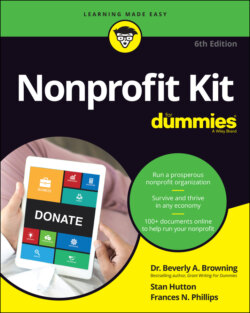Читать книгу Nonprofit Kit For Dummies - Stan Hutton, Beverly A. Browning - Страница 40
Identifying nonprofits by their numbers
ОглавлениеNonprofit organizations can be formed under the IRS code for many reasons other than charitable ones. To give you a taste of the variety of these organizations, the following list summarizes various classes of nonprofit organizations:
501(c)(3): Formed for educational, scientific, literary, charitable, or religious pursuits and also to test for public safety and to prevent cruelty to children and animals, nonprofits in this category may be classified as public charities or private foundations — the source of support for the organization usually determines the classification. Foundations are subject to additional rules and reporting requirements. This book focuses on 501(c)(3) organizations that are classified as public charities. Contributions to these organizations are tax-deductible for their donors. Public charities may engage in limited lobbying. You can find more information about lobbying in the following section.
501(c)(4): These organizations are known as social welfare organizations because they’re formed for the improvement of general welfare and the common good of the people. Advocacy groups tend to fall into this category because organizations with this classification are allowed more leeway to lobby legislators as a part of their mission to improve the general welfare. Contributions to these organizations aren’t deductible for the donor.
501(c)(5): Labor unions and agriculture and horticulture organizations formed to improve conditions for workers are in this category. These groups also may lobby for legislation.
501(c)(6): Business and trade associations that provide services to their members and work toward the betterment of business conditions are placed in this classification. This category includes chambers of commerce and real estate boards, for example. Again, lobbying for legislation is allowed.
501(c)(7): This section covers social clubs formed for recreation and pleasure. Country clubs and organizations formed around a hobby come under this classification. These organizations must be funded primarily by memberships and dues.
501(c)(9): This type of nonprofit is an employees’ beneficiary association that’s created to pay insurance benefits to members and their dependents. It must be voluntary, members must have a common bond via employment or a labor union, and in most cases it must meet nondiscrimination requirements.
Several other 501(c)-type organizations are so specialized in nature that we don’t go into them here. One of our favorites is the 501(c)(13), which covers cemetery companies.
Political action committees (PACs) and parties have their own special classification, too. They’re recognized under IRS Code section 527 and are organized for the purpose of electing persons to office. They have special reporting requirements and aren’t required to be incorporated. Donations to these organizations aren’t tax-deductible, and the names of their donors must be disclosed.
To see the full flavor of the various categories of nonprofit organizations, check out the IRS website (www.irs.gov) or review IRS Publication 557.
